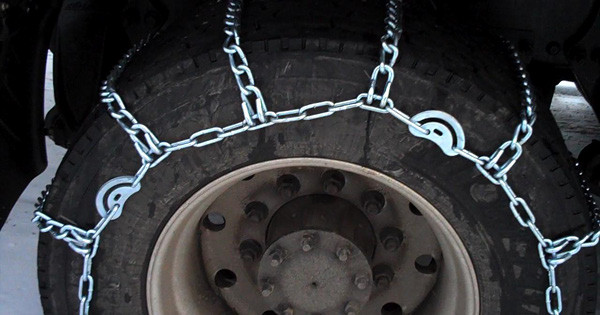Between 2012 and 2021, the United States population of people 65 and older increased by 29%. In 2021, 7,489 people 65 and older were killed in traffic crashes in the United States, accounting for 17% of all traffic fatalities.
That’s why the National Highway Transportation Safety Administration (NHTSA) is bringing attention to the safety of older drivers. The goal during Older Driver Safety Awareness Week and every week of the year is to raise awareness about older driver safety.
Click here to download campaign-earned media materials.
As we look into the future, the continued challenge of a driver shortage looms as a “perfect storm,” and older drivers play an integral part. Many variables would have an impact on the shortage. One element of the driver shortage is an aging workforce combined with a decline in the primary demographic group that comprises the bulk of the driver pool. As we see freight volumes increase many fleets are having trouble in attracting qualified drivers and may be unable to seat trucks or add capacity at a time when freight volumes are growing. If current demographic trends continue, that shortage of truck drivers could increase to 111,000 by the end of the year. Over the next decade, the trucking industry will need to hire a total 890,000 new drivers, or an average of 89,000 per year. Replacing retiring truck drivers will be by far the largest factor, accounting for nearly half of new driver hires (45%). The second largest factor will be industry growth, accounting for 33% of new driver hires. As transportation managers we are seeing our driver work force continue to age. The average age of a truck driver in the United States is over 50 years. Since 2000, the number of truck drivers 55 or older has surged 19%, to about 616,000, according to the federal Bureau of Labor Statistics. Truck companies with baby boomer drivers insist their safety record is at least as good as that of younger drivers. This is absolutely a segment of our driving force that we need and depend on. As all of us age, we do not physically or mentally age at the same rate.
The FMCSA does not have a maximum age limit for drivers of commercial motor vehicles unlike that of the FAA concerning pilots. All drivers are subject to the medical qualifications of medical certification requirements of CFR 391.
But, the question remains, how do we as transportation managers know when it is time to ask for the keys of a driver that is no longer able to operate safely?
Here are a few suggestions:
-
Develop a proactive safety and loss control program with policies and procedures that are not biased to age.
-
Require all drivers to have physical examinations completed by an FMCSA registered medical examiner who has a relationship with your company.
-
Develop job descriptions and job requirements for all positions based on actual requirements of the job activity.
-
Implement a defensive driver training program with updated training annually for all drivers.
-
Administer structured check rides at least annually to all drivers to access the driver’s skills and abilities.
-
Develop a continuing relationship with all drivers to keep an open line of communication regarding their ability to complete their driving responsibilities safely.
-
Be vigilant and observant of the actions of all drivers.
Time to Fall Back…..Daylight Savings Time Changes this Sunday November 5th!
Daylight savings time will "fall back" at 2:00 a.m. on Sunday, November 5th. Make sure that all your drivers are aware that the change to daylight savings will occur. Caution route drivers that the amount of daylight will change according to their stops with the change. An intersection or street can present different challenges to drivers with one one-hour change in the sun's position. One hour of time difference can present unique adaptations to a driver who is on a route.
Daylight Saving Time (DST) — not Daylight Savings Time — can have a significant impact on truck drivers. Shifting sleep schedules, logging considerations, and dealing with roads filled with fatigued drivers can all pose a challenge for truck drivers dealing with the time change.
Here’s everything truckers need to know about DST for November 2023.
When do I change my clocks?
Daylight Saving Time begins at 2 a.m. on Sunday, November 5 (and ends again at 2 a.m. on Sunday, March 10, 2024). Every state aside from Arizona (except for the Navajo Nation) and Hawaii observes DST.
You should set your clocks one hour behind— fall back — before you go to bed Saturday night. While most devices automatically adjust for DST, you should double-check their settings. This is especially important if you rely on your phone as your alarm clock.
How do Electronic Logging Devices (ELDs) handle Daylight Saving Time?
As e-logs (ELDs) are now federally mandated since 2017. Most e-log providers automatically handle the DST calculations for drivers.
Regardless of springing forward or falling back, drivers still need to adhere to the Department of Transportation (DOT) Federal Motor Carrier Safety Administration (FMCSA) Hours of Service (HOS) regulations of how many hours a truck driver can drive.
E-log DST examples:
- If you work 1 a.m.-10 a.m., it should show you worked nine hours versus nine because you fell back one hour during that timeframe.
- If you start your 10-hour break at 10 p.m. on Saturday, your 10 hours off duty would usually end at 8 a.m. on Sunday. Because this is a DST day, though, you will complete your 10 hours at 7 a.m.
- You must still take a complete 10-hour break and follow all HOS rules.
- The same goes for the 34-hour restart. If the restart crosses over DST on Sunday, you will reach your 34 an hour earlier than expected.
- You must still take a full 34-hour reset and follow all HOS rules.
How Daylight Saving Time can impact electronic logging devices:
The times for the duty status before daylight savings end will show a Daylight Time designation (EDT, CDT, etc.). Statuses after the time change will appear under the Standard Time designation (EST, CST, etc.).
Since this is not a standard day, the time on your November 5 log will add up to 25 hours, regardless of what device you use.
For tablets with HOS functionality, your device will automatically fall back one hour at 2 a.m. of your regulatory home terminal time.
If you are using paper logs, you must flag your log in the remarks section with the words “Fall Time Change.”
Got Chains?
If you are operating in a state that requires chains to be on board, make sure the chains are the correct size, adequately secured, clean, and not broken so as to be easily applied when necessary.
Not sure what your state chain laws are going to: https://www.tirechainsrequired.com/pages/tire-chain-laws










